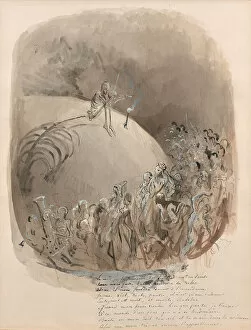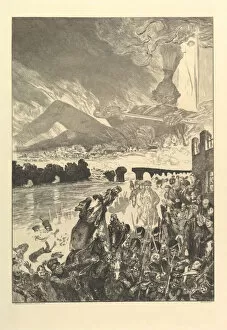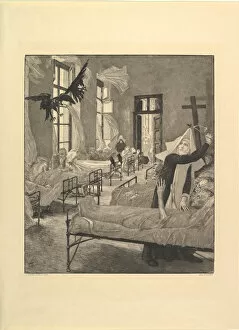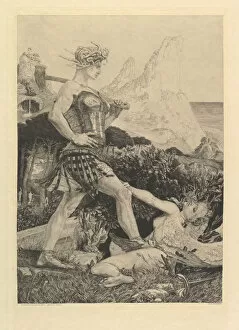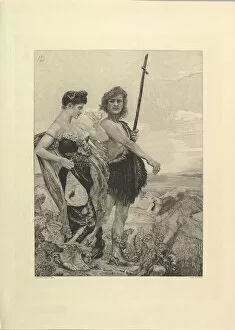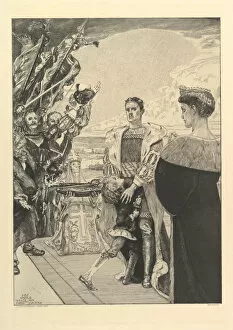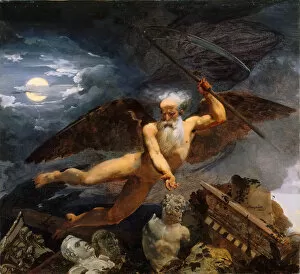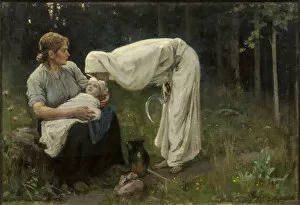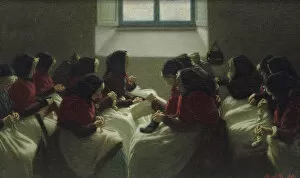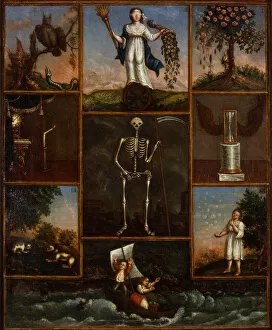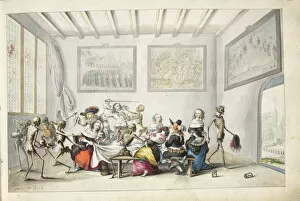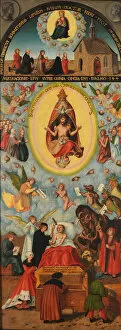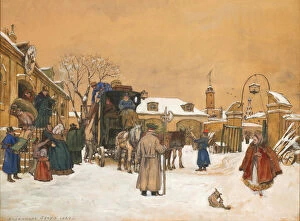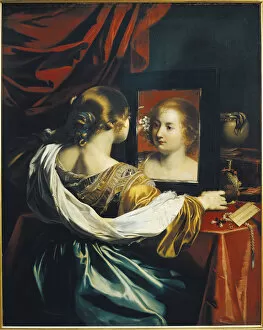Memento Mori Collection (page 5)
"Memento Mori: A Reflection on the Impermanence of Life" In the realm of art, the concept of "memento mori" has been a recurring theme throughout history
All Professionally Made to Order for Quick Shipping
"Memento Mori: A Reflection on the Impermanence of Life" In the realm of art, the concept of "memento mori" has been a recurring theme throughout history. From Vanitas Still Life with a Tulip, Skull and Hour-Glass to Roman memento mori mosaics, artists have sought to remind us of our mortality. One striking example is Arnold Bocklin's Self-portrait with Death Playing the Fiddle. In this haunting image, Bocklin confronts his own mortality, reminding us that death is an inevitable part of life. Similarly, The Knight, Death and the Devil by Albrecht Dürer depicts a knight valiantly facing death itself as he rides through a desolate landscape. Even in religious contexts like Adam and Eve's Family Tree or Abbot Armand-Jean le Bouthillier de Rance's portrait, we are reminded that no one can escape death's embrace. Sir Thomas Aston at the Deathbed of his Wife captures profound grief and loss as Aston mourns his beloved spouse. Objects such as Desk and Escritoire serve as reminders too; their existence outlasts ours but will eventually crumble into dust just like everything else. Allegory of Vanity portrays worldly possessions as fleeting illusions that hold no true value in the face of eternity. The artwork Harlequin and Death by Konstantin Andreyevich Somov presents an intriguing twist on this theme by juxtaposing humor with mortality. It reminds us that even amidst laughter and joy, death remains ever-present. Hugo Simberg's Towards the Evening takes a more contemplative approach to memento mori. The painting invites viewers to reflect on life's transience while embracing its beauty before darkness falls. In all these works spanning centuries and mediums – from oil paintings to engravings – "memento mori" serves not only as a reminder but also as an invitation.


